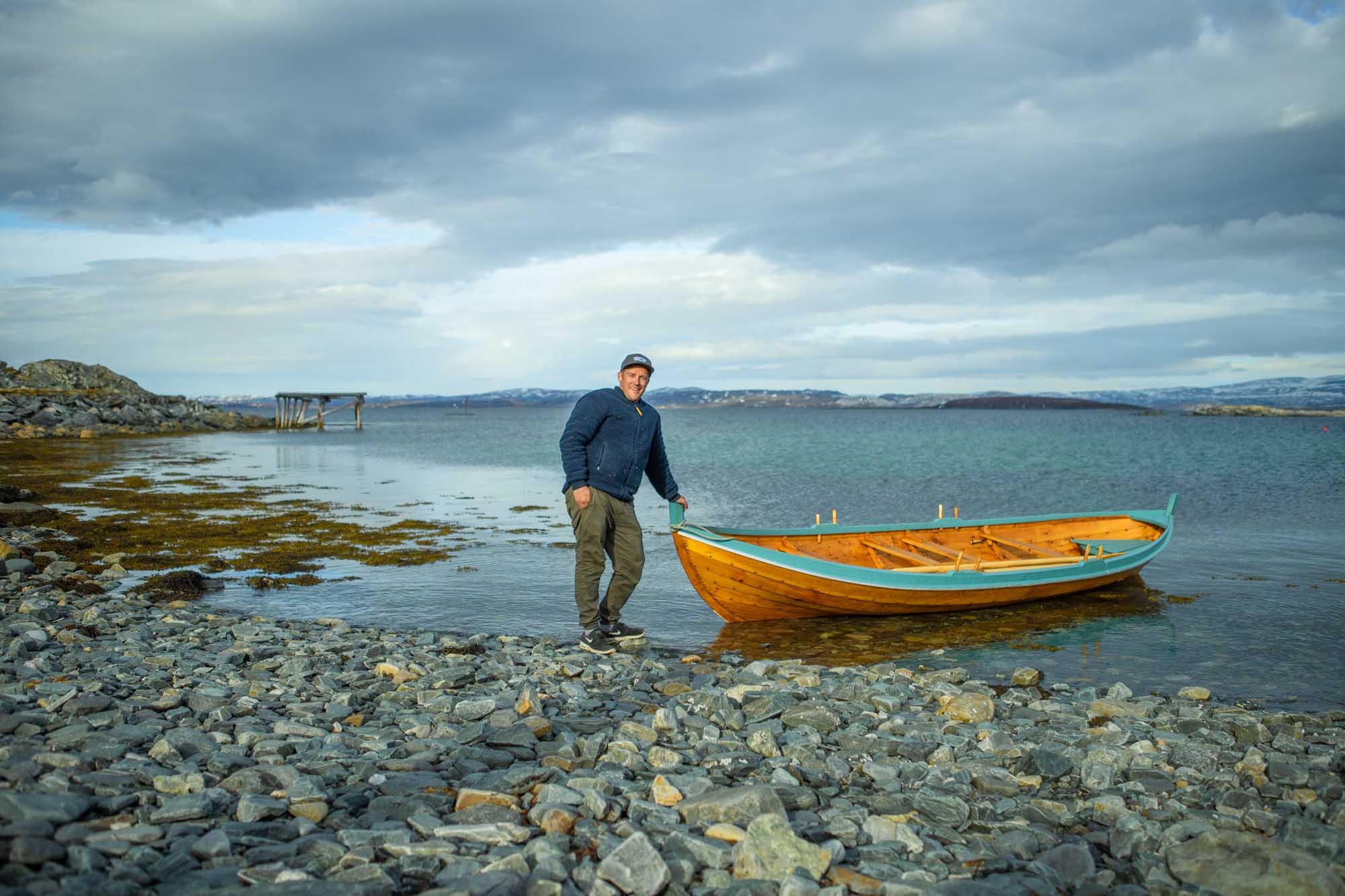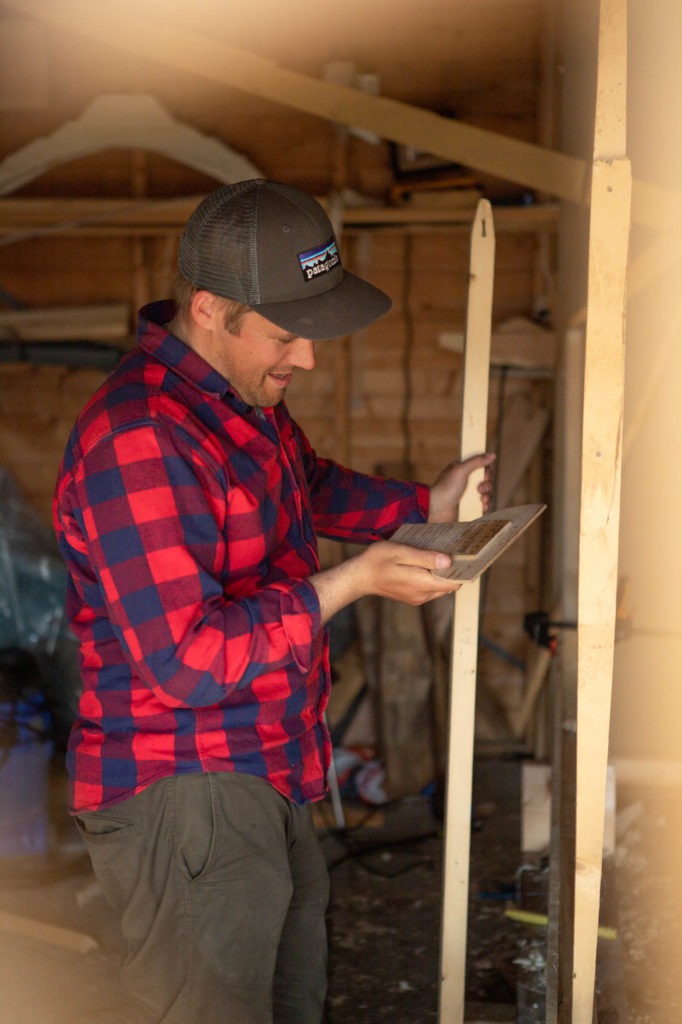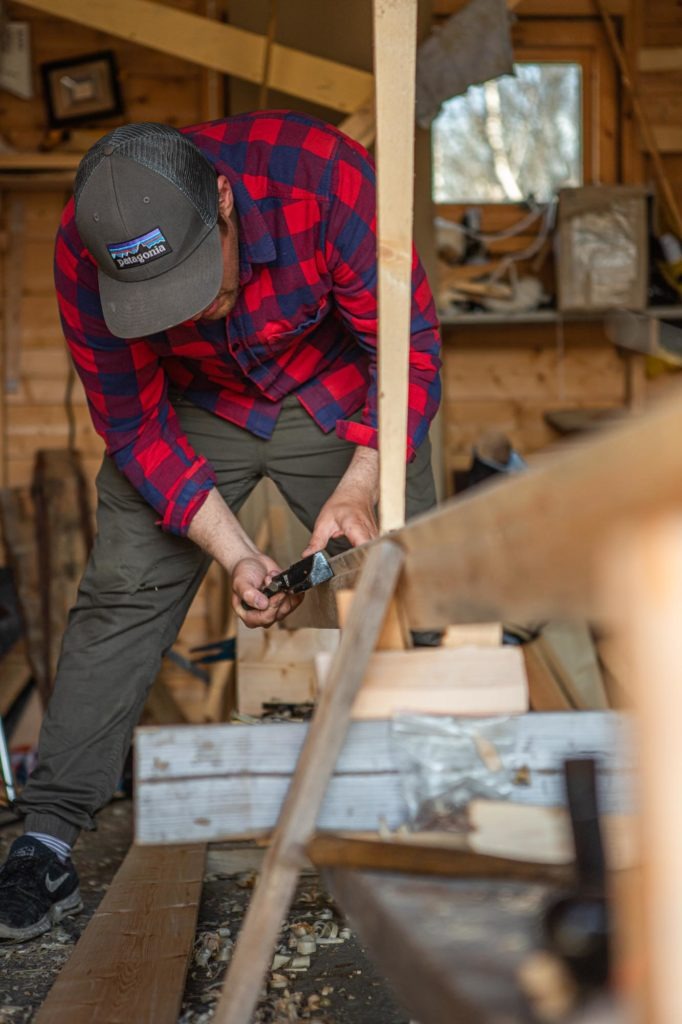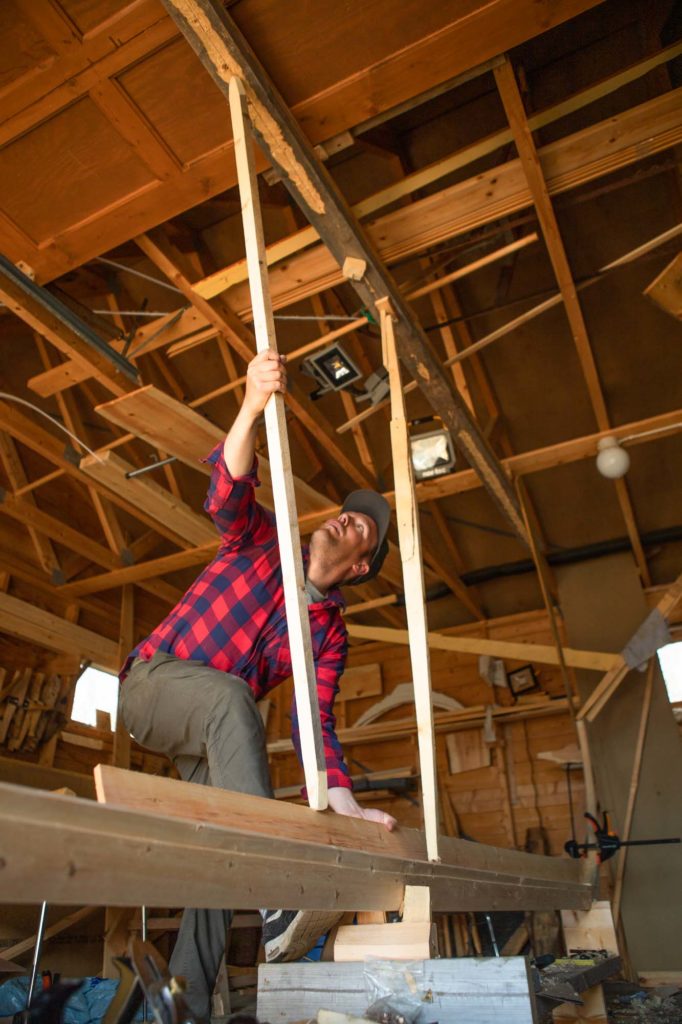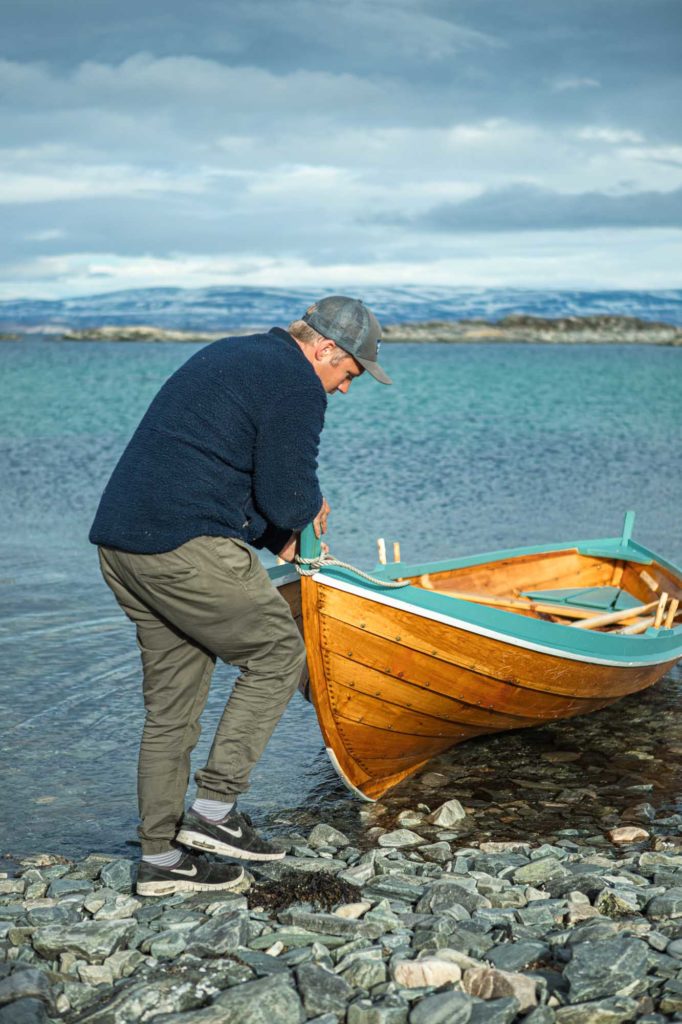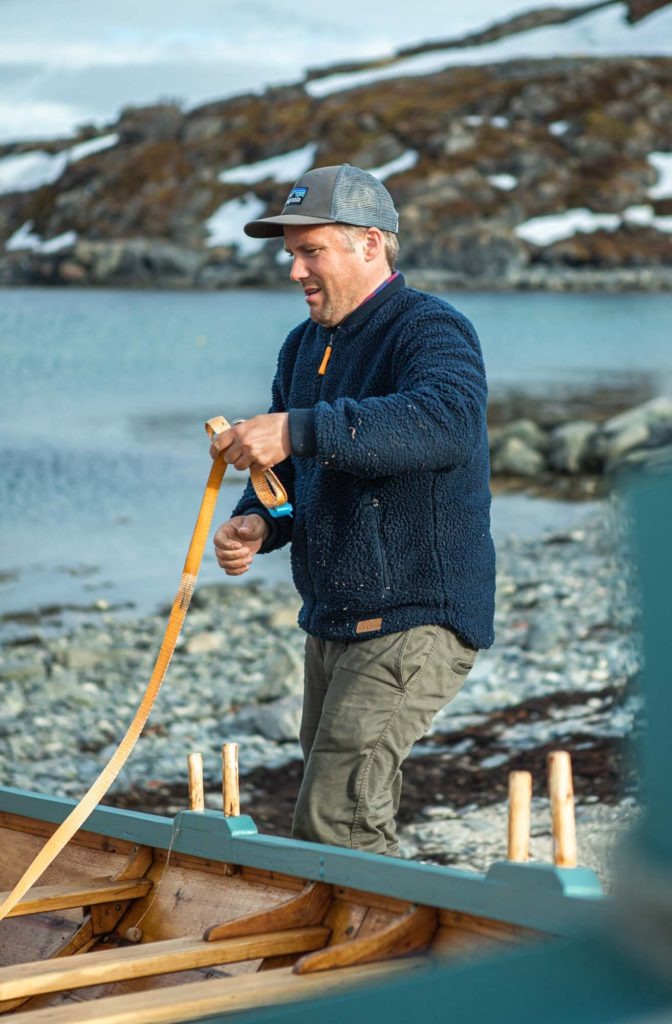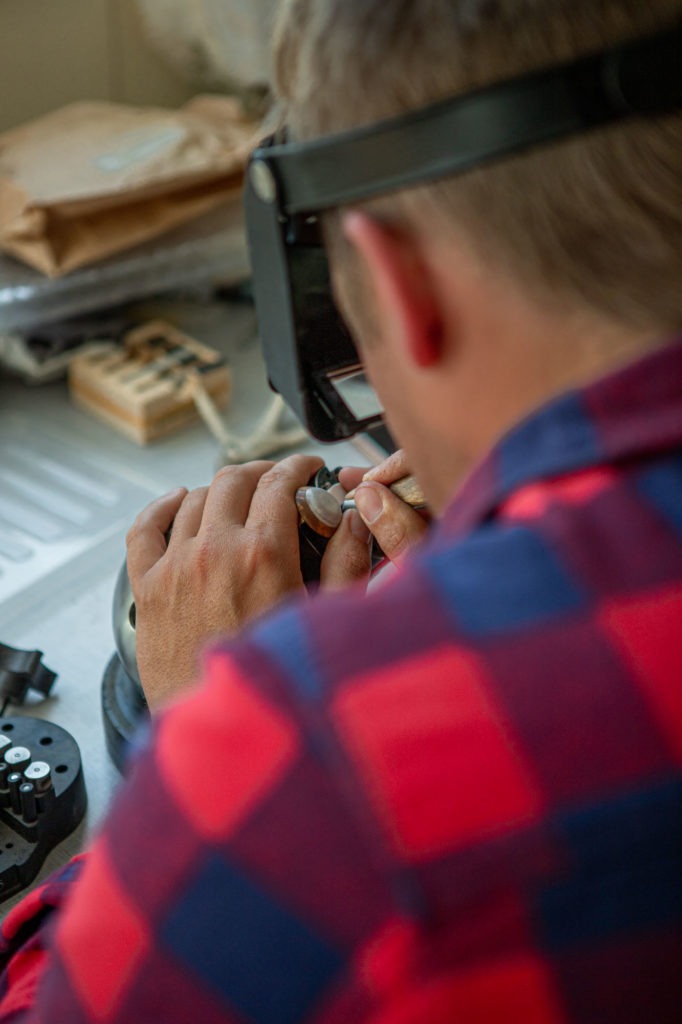It is a relatively warm day in Billefjord. The spring has just begun, and the sun is shining upon the small fjord through a layer of clouds.
33-year-old Ove Stødle, a local Sámi craftsman is in the garage working on a small boat. The dream is to one day have a boat building workshop, but for now the garage works just fine. Chips fly when a sharp plane is led along a plank destined to become the keel of the traditional wooden boat. This is Ove’s second boat in the making. He just finished his first one, the first of a total of four. Last year, Ove received a grant to make four of these traditional boats as a part of a marine culture initiative. He was used to working with crafts but had never made a boat when he got the offer. A breeze blows through the wide-open garage door, but the man in the plaid shirt does not seem to mind. He is way to busy telling everything about the boat’s production process. Smiling from ear to ear, the eager man educates in how his new passion is made.
“How long did it take to make the first boat? Well, way too long.”
The Spisse
Ove works on a traditional Northern Norwegian spisse. The spisse was developed in the late 1800s meant to be a hybrid between a recreational boat and a fishing boat. The practical boat was widely used by Norwegians in the arctic for almost a century. Being sturdy and steady the boat was a key part of the transportation of goods and people on the arctic fjords of Norway. Depending on the size, a group of five to seven people can fit comfortably on a trip over the fjord. The seats are removable so you can fit goods and animals, as well as a yarn when you are fishing. Just like many other wooden boats, the spisse’s fate was to be replaced by cheaper, mass-produced plastic boats. Today, Ove is one of two remaining men in the Finnmark area building the traditional boat.
The Second Maiden Voyage
The sun is still high on the sky on this spring day in Billefjord. The wind is stronger by the shore than at the garage. It is not that cold, but most people definitely would want a windbreaker and some gloves here. The bay we are at is sheltered from the worst winds, so it is good conditions for a little row trip. Ove pushes the boat down the rocky shoreline and onto the narrow bay. This is the first time the boat is on the sea since the maiden voyage just two weeks ago, but this is the first time with a passenger on board. Because this is a transportation boat, in a way, this is the maiden voyage. The spisse lies sturdy on the water while we hop aboard. The boat is designed with two rowers in mind, but someone has to man the camera, documenting the voyage. Captain Ove takes responsibility for steering and propulsion with a smile. After around 20 minutes rowing back and forth in the bay, we go back to shore. The passenger voyage has been a success, and he now knows that the work has paid off. Now he just has to follow the winning recipe for the three remaining boats.
“I should probably use a life jacket, but you know, a captain has to go down with his ship. Right?”
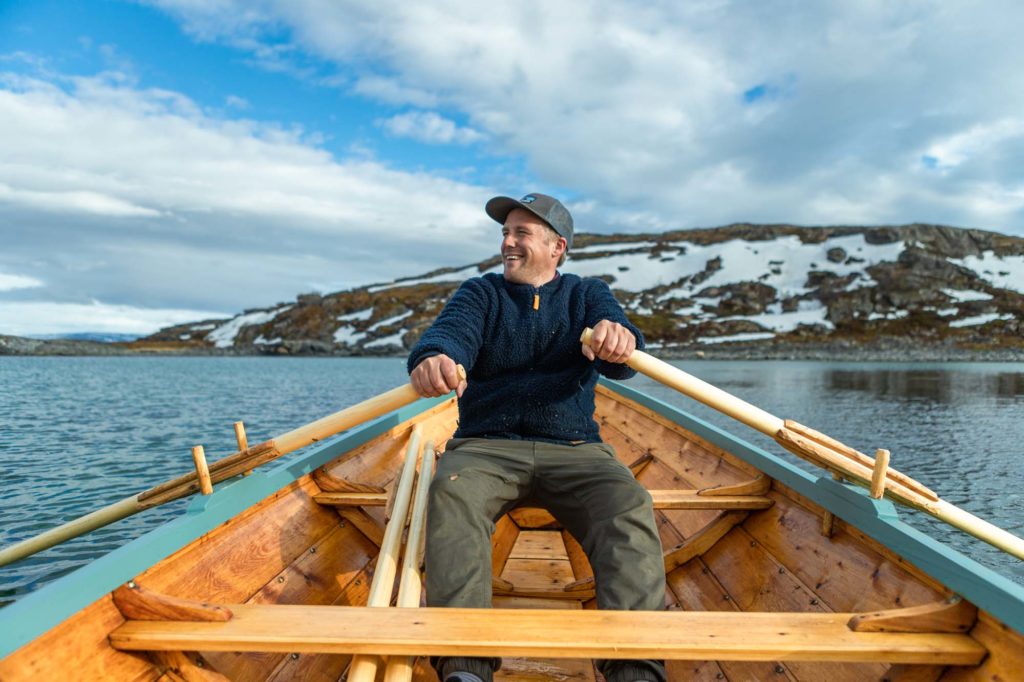
A Handicrafts’ man
During the winter, the temperature in the garage is unbearable. So instead of freezing in the garage, Ove spends his time in his workshop, working on duodji, traditional Sámi handicrafts. For five years he has worked as a full-time handicrafter, making belts, jewellery and other Sámi crafts. The demand for these crafts has increased in the past years, so earning a living from the art is possible. The jovial man smiles while engraving small pieces of reindeer antlers. At first glance, it is hard to see what he is making. But it seems to be some kind of token. Maybe it is for a necklace or maybe it is a decoration for the second boat. Who knows? We just have to wait and see.
“It is nice to have something else to twiddle with inside when it is freezing temperatures outside.”
Interesting read? Then we suggest reading our story on Sweden’s Last Wooden Boat Builders, a story about Mattias Malmros, a boatbuilder working on traditional Swedish racing sailboats. Here at Nuet, we publish weekly blog posts about Scandinavian crafts, cuisine, travel and more. Check out the blog at nuetaquavit.kinsta.cloud/stories and follow our Instagram @nuetaquavit to get instant updates on new posts straight to your feed.
